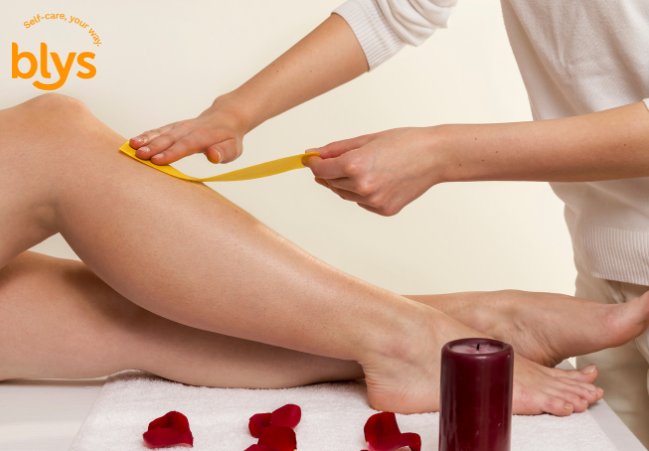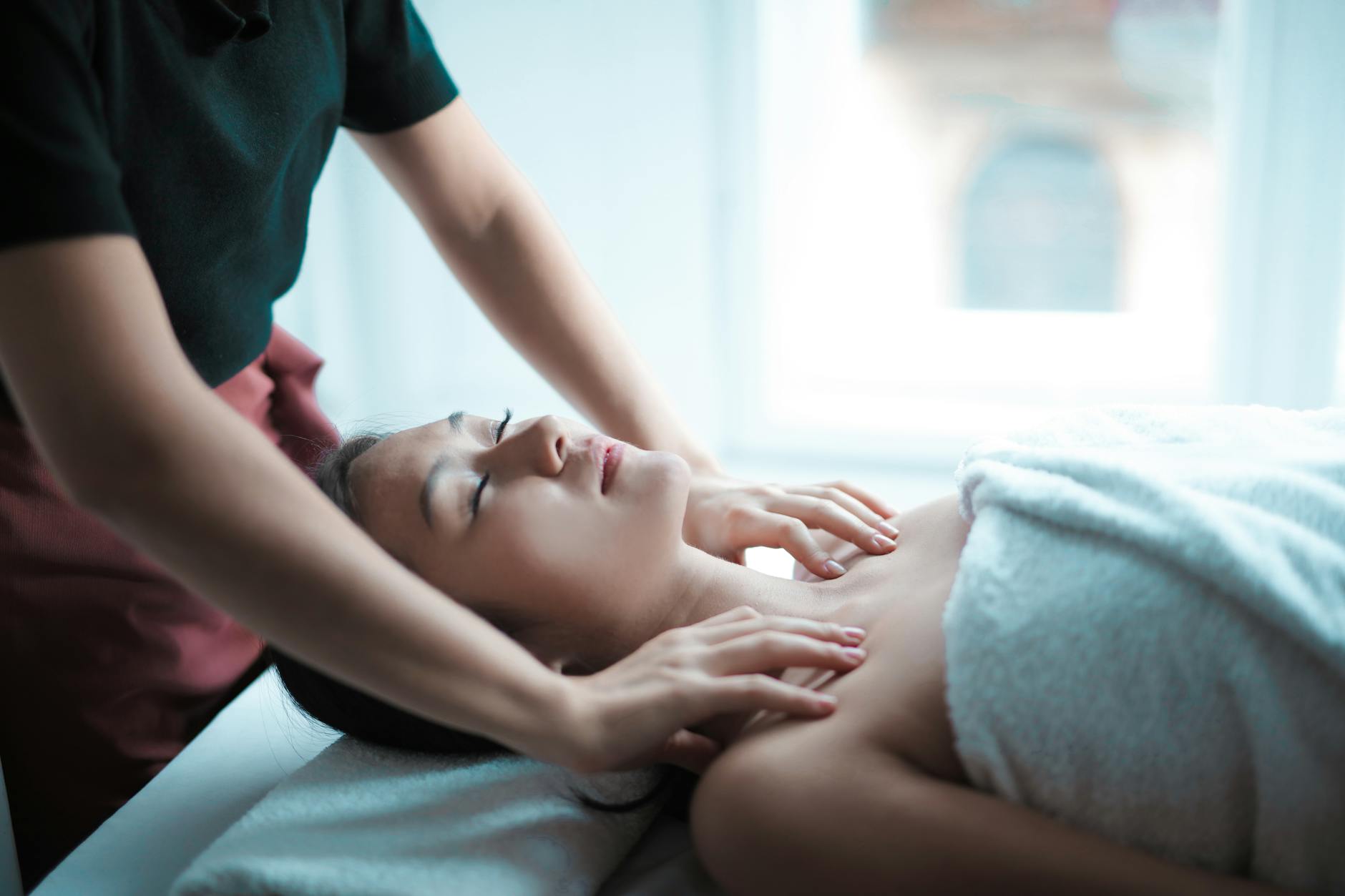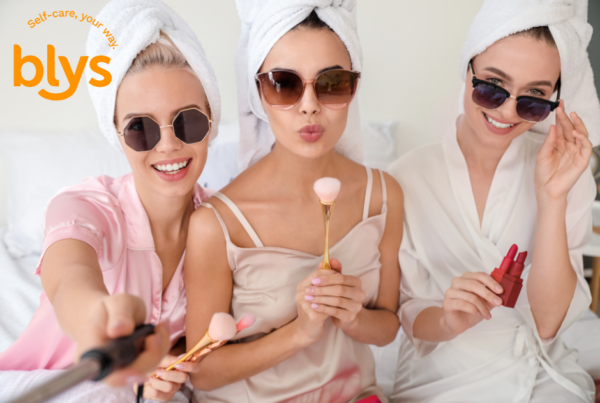
Sensitive skin and waxing don’t always feel like a perfect match, but they can be. If you’ve ever experienced stinging, redness, or bumps after waxing, you’re not alone. For people with easily reactive skin, even minor hair removal routines can feel uncomfortable or leave lasting irritation. The good news? With the right prep, products, and aftercare, waxing doesn’t have to come with side effects.
Whether you’re using gentle wax strips at home or booking a waxing hair removal service with a professional, knowing how to work with sensitive skin, not against it, makes all the difference. This guide breaks down the safest techniques, ingredients to look for, and tips to keep your skin calm before, during, and after waxing.
Understanding Sensitive Skin and Waxing
Sensitive skin isn’t a skin type; it’s a condition. People with sensitive skin tend to react more easily to products, friction, or environmental factors. This can be due to a naturally thinner skin barrier, underlying skin conditions like eczema or rosacea, or even hormonal changes.
When it comes to waxing, these factors can heighten discomfort. Hair is removed from the root, which puts stress on the skin’s surface. If the skin barrier is already compromised, this can lead to more noticeable reactions.
Common responses include:
- Redness and inflammation
- Stinging or burning sensation
- Small bumps or ingrown hairs
- Prolonged sensitivity after waxing
In more severe cases, waxing can trigger flare-ups of existing conditions or cause prolonged irritation. If your skin is sunburnt, broken, or experiencing an active breakout, it’s best to avoid waxing until it heals.
Looking for a gentler waxing hair removal service? Book a qualified Blys therapist to wax in the comfort of your home with professional-grade products designed for sensitive skin.
Choosing the Right Wax for Sensitive Skin
When your skin is prone to irritation, the type of wax you use plays a major role in how your skin reacts. Some formulas are better suited to delicate areas, while others can cause more harm than good if not used properly.
Whether you’re waxing at home or with a mobile therapist, knowing what’s in your wax and how it behaves can make all the difference in achieving a smooth result without the sting.
| Wax Type | Best For | Description | Sensitive Skin-Friendly? |
| Soft Wax | Larger areas (arms, back, legs) | Applied thinly and removed with a cloth strip. Adheres to both skin and hair, which can cause irritation on delicate or thin skin. | Not ideal for sensitive skin, especially on small areas |
| Hard Wax | Delicate zones (face, underarms, bikini) | Hardens on its own and doesn’t require strips. Grips only the hair, not the skin—making removal gentler and less painful. | Yes—commonly recommended for sensitive skin |
| Wax Strips | Quick at-home touch-ups | Pre-coated and easy to use, but ingredients vary. Some use harsh adhesives that may trigger a reaction if used on sensitive areas or too frequently. | Use with caution—look for hypoallergenic options |
When you book with Blys, your mobile therapist will choose the best waxing method for your skin and body area, using high-quality products that reduce irritation and discomfort.
What Ingredients to Look For (and Avoid)
Just as important as the wax type is what goes into it. Sensitive skin benefits from soothing, anti-inflammatory ingredients that protect the skin barrier and help calm post-wax reactions.
Skin-friendly ingredients include:
- Aloe vera: Offers hydration and reduces redness
- Azulene: A blue chamomile extract with anti-inflammatory properties
- Chamomile: Naturally calming and helps reduce swelling or irritation
- Beeswax: A gentle, non-reactive base that moisturises as it works
These ingredients help create a more comfortable waxing experience and support skin recovery. Many professional waxes used in mobile waxing services like Blys are formulated with these calming elements to reduce post-wax sensitivity.
Ingredients to avoid:
- Artificial fragrances: Often irritate reactive skin and can trigger contact dermatitis
- Alcohol-based formulas: Can dry out and sensitise the skin
- Synthetic resins and dyes: Common allergens for people with sensitive or allergy-prone skin
If you’re unsure what products to use, it’s safest to rely on a trusted professional. Blys therapists bring everything needed for your appointment, including premium wax designed for sensitive skin.
Explore our home waxing services here and let us take the guesswork out of smooth, irritation-free skin.
Pre-Wax Care: How to Prep Skin Safely
Preparing your skin properly before a waxing session can significantly reduce the risk of irritation, redness, or breakouts, especially if your skin is prone to sensitivity.
These steps help protect the skin barrier, reduce inflammation, and ensure the wax adheres to hair not dry skin or residue. Whether you’re waxing at home or booking a professional waxing hair removal service, don’t skip these essentials.
Research shows that gentle exfoliation 24 hours before waxing can help remove dead skin cells and reduce the risk of ingrown hairs, as long as it’s done with care and not too close to the waxing session.
Here’s a quick guide to what your skin needs before waxing:
| Pre-Wax Step | Why It Matters |
| Patch test first (at least 24 hours prior) | Checks for potential allergic reactions or irritation to wax or aftercare products |
| Gently exfoliate the area | Removes dead skin cells and helps prevent ingrown hairs |
| Keep skin dry and product-free | Oils, lotions, or sweat can prevent wax from sticking properly |
| Avoid caffeine or alcohol | These can make skin more reactive or heighten pain sensitivity |
| Skip intense workouts before your session | Increased body heat can make skin more prone to inflammation and redness |
Bonus tip: If you’re new to waxing or trying a new product, always start with a smaller area to see how your skin reacts before moving on to more sensitive zones.
Taking these steps seriously can make a big difference not just in comfort, but in the results, too.
Want a deeper look at the different areas you can wax safely? Check out our guide on waxing body and facial hair 101 for tips by zone.
In-the-Moment Techniques That Make a Difference
Even with the right products and prep, how the wax is applied and removed plays a major role in your comfort especially if you have sensitive skin. Technique and temperature control aren’t just about efficiency; they’re what stand between a smooth, fuss-free wax and a painful, patchy one. That’s why choosing a waxing hair removal service that focuses on precision and care like Blys can make all the difference.
Temperature Matters
Too-hot wax is one of the most common culprits behind burns, swelling, or skin trauma especially for people with thinner or reactive skin. If wax is overheated, it can stick too aggressively, making removal more painful and increasing the risk of skin lifting or inflammation.
That’s why professional temperature control is so important. Blys therapists always check and adjust wax temperature before application, using tools and techniques designed to protect your skin. Warm not hot wax is enough to soften the hair follicle and provide a clean removal without causing heat-related damage. This step may seem simple, but it’s essential for a gentle experience.
Technique + Pressure = Less Pain
The way wax is pulled and what happens immediately after has a direct effect on pain levels. Professionals know that waxing isn’t just about removing hair; it’s about supporting the skin through the process.
Proper technique means applying the wax in the direction of hair growth and pulling it off quickly in the opposite direction, always parallel to the skin not upward. This minimizes tugging and reduces trauma to the skin’s surface.
Right after removal, pressing a firm hand onto the waxed area for a few seconds helps dull the sting by soothing nerve endings. It’s a small move with a big impact. When done correctly, this combo of controlled pulls and calming pressure can significantly lower discomfort and prevent post-wax reactions.
These techniques come standard with every Blys appointment because comfort and safety should never be optional.
Aftercare Essentials for Sensitive Skin
Waxing temporarily leaves the skin more vulnerable, especially for those with sensitivities. Following the right aftercare helps reduce redness, prevent breakouts, and support proper healing. Start by applying a cool compress or a soothing gel like aloe vera immediately after waxing. This calms the skin, reduces swelling, and helps take the heat out of freshly waxed areas.
Keep your skin moisturized with a fragrance-free lotion or a light natural oil such as jojoba or sweet almond. Avoid products with perfume, alcohol, or essential oils for the first couple of days, as they can trigger irritation.
For at least 24 to 48 hours, avoid sun exposure, saunas, intense workouts, or hot showers. These can all worsen inflammation or clog open pores. Opt for loose-fitting clothing to prevent friction especially after waxing delicate areas like the bikini line or underarms.
Lastly, hold off on exfoliating for about 2 to 3 days. Giving your skin time to settle reduces the risk of bumps or ingrown hairs.
Want salon-smooth results without the salon stress? Let Blys bring home waxing services to your door.
Common Mistakes to Avoid
Even when you’re careful, a few small mistakes can make sensitive skin flare up after waxing. These issues are often easy to overlook especially if you’re doing it yourself at home. Knowing what not to do can help you avoid discomfort, irritation, or even minor injury. Here are the most common waxing mistakes people make, and how to avoid them:
- Waxing over irritated or sunburnt skin: If your skin is already inflamed, peeling, or sun-damaged, waxing will only make things worse. It can lead to excessive redness, skin lifting, or a burning sensation. Always wait until the skin has fully healed before waxing again.
- Re-waxing the same spot too soon: Trying to remove leftover hairs by going over the same area more than once might seem like a good idea but it can damage the skin barrier and cause swelling, bruising, or broken capillaries. Let the skin settle first before doing any touch-ups.
- Using scrubs, retinol, or acids too close to your session: Active skincare ingredients like AHAs, BHAs, or retinol increase skin sensitivity. If used too close to waxing, they can leave your skin vulnerable to irritation, rawness, or even microtears. Stop using them at least 48–72 hours before and after waxing.
- Not patch-testing new products: Even gentle-sounding wax or aftercare products can cause a reaction if they’re not suited to your skin. Always do a patch test on a small area before applying something new to a larger or more sensitive zone.
These missteps are easy to avoid once you know what to look out for. If you’re ever unsure, it’s best to consult a professional who knows how to work with sensitive skin. Blys therapists are trained to assess your skin’s condition and adjust the waxing method to suit your needs
Want more advice on what to avoid? Read our full guide on waxing mistakes and how to fix them for helpful tips on keeping your waxing routine safe and irritation-free.
When to Skip Waxing (And What to Try Instead)
Sometimes, the best thing you can do for sensitive skin is to hold off on waxing. If you’re dealing with active breakouts, eczema, or any skin infection, waxing can make things worse by irritating already inflamed skin or spreading bacteria.
It’s also important to pause waxing if you’re on medications like Accutane or topical retinoids, as they thin the skin and increase the risk of damage. Always check with your GP or therapist if you’re unsure.
In the meantime, trimming or shaving is a gentler option. It won’t remove hair from the root but can keep things tidy without overloading your skin. If you notice ongoing irritation or repeated reactions, consult a professional to find the safest hair removal method for your skin’s current state.
Why Home Waxing Services Are Better for Sensitive Skin
For sensitive skin, the environment plays a key role in how your body responds to waxing. Home waxing services remove many of the common triggers you might find in a salon like harsh lighting, loud noise, or shared equipment all of which can add stress to the skin.
Staying in your own space allows you to relax more fully, which is especially important for those who are anxious or prone to flare-ups. You’re in control of the setting, whether that means dim lighting, a warm room, or simply being in your own familiar surroundings.
- Less exposure to irritants: No public waiting areas, shared tools, or lingering salon smells just a clean, controlled space tailored to you.
- More personalized treatment: Blys therapists adapt their technique and products based on your skin’s needs, so you get a waxing experience designed specifically for comfort and care.
Booking with Blys means more than just convenience. You get professional-grade tools, skin-safe products, and a therapist who focuses on your comfort from start to finish all in the privacy of your own home.
For those with sensitive skin, it’s not just about removing hair it’s about how you care for your skin throughout the process. That’s why Blys home waxing services offer a better, safer, and more personalized alternative to traditional salons. It’s smooth skin, made simple.
Smooth Skin Starts with the Right Care With Blys
Having sensitive skin doesn’t mean you have to give up on waxing it just means being more mindful with your approach. From choosing the right wax to following proper aftercare, small changes can make a big difference in how your skin reacts.
The key is to use high-quality products, follow a gentle pre- and post-wax routine, and when possible work with trained professionals who understand sensitive skin. When you choose a service like Blys, you’re not only getting convenience, you’re getting expert care that’s tailored to your needs.
Blys therapists are experienced with all skin types, including reactive or delicate skin, and they come equipped with everything needed for a safe, comfortable experience right at home. Whether it’s your first time or part of your regular routine, waxing can be smooth, stress-free, and kind to your skin with the right support.





